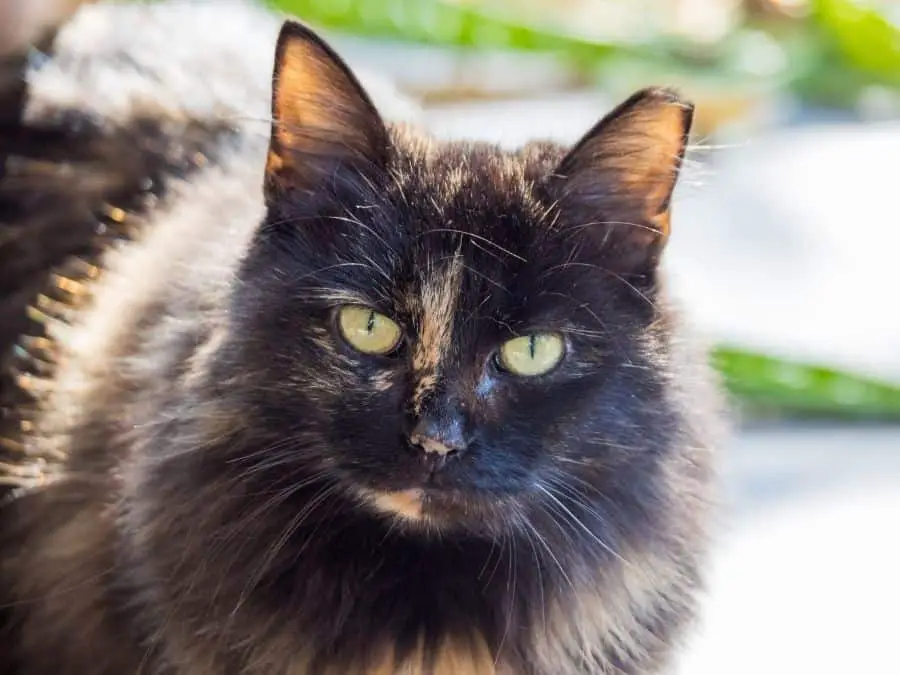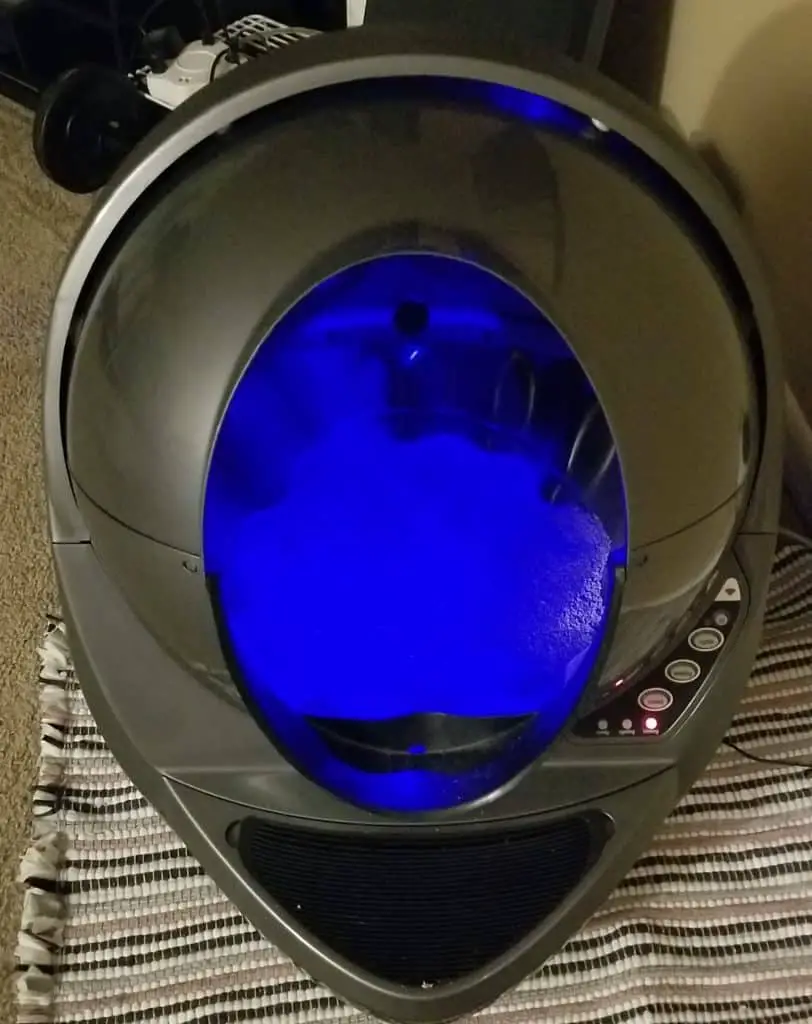More Meows is an Amazon Associate. As an Amazon Associate we earn from qualifying purchases. We may also earn commissions if you purchase products from other retailers after clicking on a link from our site.
When you hear the word purr, you immediately think of a happy, well-fed cat or kitten. You know from either owning a cat or have been in contact with a cat that this is how you can tell that the cat is content. Purring usually means contentment in cats, so…do feral cats purr?
Feral cats do purr. However, feral cats do not purr for the conventional reasons that tame house cats do. Feral cats are colony cats, and the only time they might purr is when the mom bonds with her kittens or when they are stressed.
Cats are usually quite vocal, meowing and making several little chirps or guttural noises that are as unique to them as humans’ voice patterns.
Distinct differences between feral and stray cats are noted, and the two cats are not to be confused. They might appear similar in looks, traits, and habits; however, some signs tell these two types of cats apart on closer inspection. If you are a cat lover and have some stray cats or perhaps feral cats in your area, below are some helpful tips to help identify the wild cat and stay safe while doing so.
If you are wondering what the best products are for your cat, check out this article that will break down all my recommendations for you: Things To Buy For A Cat Right Now!
Why Do Cats Purr?
First, to understand how and why cats purr, we can look at the various conditions that make that possible. Let us explore:
- Mealtime – Your cat knows it is mealtime, and they are hungry. Cats start to purr with happiness while you prepare the next meal.
- Contentment – Your cat is relaxed on your lap or next to you on the bed with eyes closed and purrs to express that they feel safe and happy.
- Bonding – Mother cats will purr after giving birth, and the kittens will respond with purring back. This is a superior bonding and communication method between mom and kittens.
- Healing – Many people and some experts believe that cats can sense when their owners feel unwell or are hurt. They might lie on to or closely next to you and purr. The vibrations of the purr assist in the healing process.
- Stress and pain – Cats will most certainly purr when hurt or under severe pressure, and this is a self-soothing method.
For most cat owners, it will be easy to ascertain why your cat is purring. You have a well-looked after, happy cat, and purring communicates that on a deep level. How would you determine if the stray or feral cat purrs? Looking at the differences between those two, we can better understand what would make a feral cat purr.
In addition to feral cats purring, they could also meow. To learn the remarkably interesting reasons why feral cats meow: Click Here.
Stray vs Feral Cat: The Differences
According to feral cat experts, there are significant differences between stray cats and feral cats. They look different and have contrasting personality traits. Below we go into more detail on stray and feral cats:
Stray Cat Characteristics:
- Human contact. A stray cat has had human contact at some point in its life before becoming homeless.
- Approachable. A stray cat will often approach a home looking for food or come close to a person putting food out for stray cats.
- Tamable. Since stray cats are either lost or abandoned, in some instances, they can re-introduce them into a home environment with some patience and care.
- Become feral. When stray cats have diminishing human contact and spend too much time alone, they can turn feral and avoid human contact at all costs.
- Will purr when fed. Stray cats will purr when presented with food, and this is typical cat behavior that shows contentment in the situation.
Feral Cat Characteristics:
- No human contact. Feral cats have either had no human contact ever or are stray that has lost the need for human connection over several years.
- Not approachable. Feral cats will not approach humans and will typically try to avoid contact as much as possible. They would rather hideaway.
- Not tamable. Feral cats are not tamable, and they do not wish to be close to humans, be picked up, or live inside a house.
- Born feral. Feral cats are usually born into a long line of stray cats that, having been abandoned and de-socialized with very little or no human contact, kittens under four months old might be socialized with a human touch.
- It does not purr when fed. Unlike stray cats that will display typical cat behavior and purr when presented with food, feral cats will hiss rather than respond with a purr.
Feral Cat Society

To get close to a feral cat is exceedingly difficult because they are so skittish and do not like humans, getting to understand them better can give insight into what can make them purr. Their social structure will be very different from domestic and even stray cats.
Feral cats are known to either live solitary lives or form matrilineal colonies. Wild males might be more inclined to live independently and have a territory that he patrols and protects.
A matrilineal colony means that you can trace several generations through the maternal lineage instead of the paternal. Feral cats will follow the rules of the street and do not mix with stray cats. Feral cat colony structure usually looks like this:
- Family ties. Feral cats usually live solitary lives, and they do not form packs like wild dogs. They will only loosely form a colony with relatives.
- Hunting. Feral cats will hunt for themselves unless a mother needs to provide for her young kittens.
- Territory. Male feral cats will maintain a loose domain but only to protect their interests. They are not loyal to protecting other wild cats.
- Co-parenting. Several female cats live together and have kittens; more than one queen may suckle them. Cats will form stronger bonds this way.
- Aggression. In female colonies, displays of aggression are not commonplace. Young males reaching sexual maturity will behave with aggression until they have to be expelled from the settlement. Older solitary males act with tolerance instead of attack.
One aspect of how feral cats live that might pique your interest is around if feral cats abandon their young. To learn the full truth on if feral cats abandon their kittens, check out my article: Click Here.
Stray vs Feral Cats: Appearance Differences
Feral cats have certain similarities to stray cats, and a closer look will show some remarkable differences.
| Feral Cat Appearance | Stray Cat Appearance |
| A thick neck and big head. | Standard size head and neck. |
| Well-groomed coat and spikey due to elevated testosterone levels. | Dirty and cluttered coat. Coat hairs are even. |
| May present with stud tail from fighting. | Neat and bushy tail. |
| If neutered through the TNR program, males will have an ear tip. | Will not present with an ear tip |
Helpful Tip
Stray cats will approach you with their tail raised and will most likely rub against your leg. Feral cats almost always tuck their tails next to the body and will avoid contact. If a cat suddenly approaches you, always be mindful of how it acts. Feral cats can be very aggressive and will not hesitate to attack you.
Other Feral Cat Behaviors
A few other behavioral displays in feral cats are likely misjudged for being hurt or injured when it is a sure sign of aggression. If you plan to trap a stray or feral cat, knowing the difference can prevent an attack and injury.
| Feral Cat Behavior | Stray Cat Behavior |
| Will not allow any person to touch them. | Will allow touching to some degree. |
| Will cower in the back of the cage. | Will come to the front of the cage. |
| Will hiss, growl, and strikeout unprovoked. Ears pulled back, and pupils dilated. | Will hiss if startled and possibly growl. |
| Will ignore toys, food and remain tense. | Will show interest in food, possibly in toys. |
| I panicked, will try to escape the cage, and could hurt themselves. | It will not easily be panicked and can start rubbing against the cage with its head. |
One feral cat behavior you may be wondering about is if they drink water. Check out my article to learn valuable insights on if feral cats drink water: Click Here.
Helpful Tip
Helping neuter and spay feral cats in your area can be a great way of getting involved; try to look for organizations that can assist. Tackling feral alone can cause injury.
Conclusion
There is no doubt that all cats can purr for several reasons—showing affection, emoting contentment, and healing. Feral cats have a very different social environment. Although they do indeed purr, it is constrained to between a queen and her kittens, and on the infrequent occasion, they are between family members and show happiness.
If you enjoyed this article, please check out a few more:
- Do Stray Cats Die Of Hunger? This Is Reliable: Click Here.
- Can Stray Cats Be Affectionate? Best Reason Why: Click Here.
- Do Stray Cats Carry Diseases? You Need To Read This: Click Here.
Here are some of my favorite cat products
In addition to checking out some other More Meows articles, I hope you’ll check out some of my favorite cat products as well. These are affiliate links, so if you end up using them, I’ll get a commission at no extra cost to you. These are the products I really do find most helpful.
Litter Box: I started out with normal, traditional litter boxes for my cat. Then, I tried this automatic litter box on Amazon (affiliate link), which helped reduce the litter upkeep. Finally, I am now a believer in the Litter-Robot 3 Connect on Amazon (affiliate link). This robotic litter box is not for everyone based on the price tag, but for me the benefits (very little upkeep, works efficiently, clean, mobile app) far outweighed the cost.

Cat Tree: I have purchased a couple of this Amazon Basics Cat Tree on Amazon (affiliate link). My cat spends a lot of time on and around this cat tree, which I position near my sofa. She uses the scratching posts on this cat tree multiple times a day, which means she is not scratching the sofa instead.
Cat Water Fountain: I love this cat water fountain on Amazon (affiliate link). There are three main benefits to having a water fountain like this for your cat. The first benefit is that it keeps water running so that your cat doesn’t need to drink still water. The second benefit is that it filters the water. The third benefit is that it will keep your cat hydrated!
